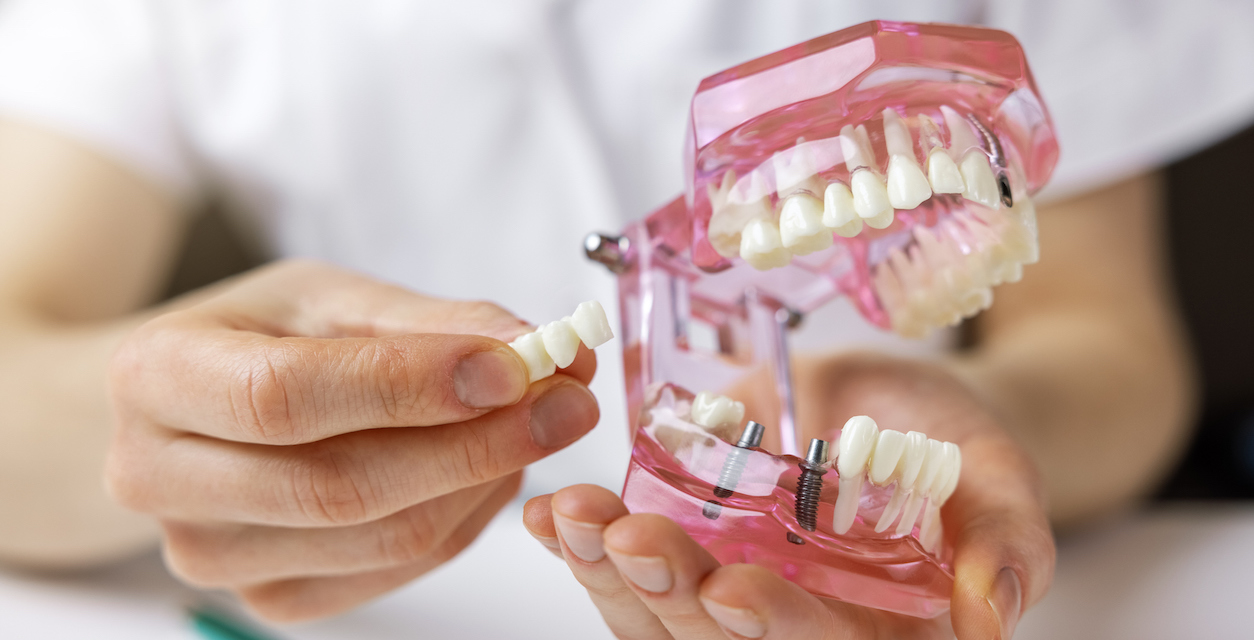Are Dental Bridges Still Relevant Today?
Many patients say they have heard little about bridges in the last ten years. Some tell us their parent had one, and they assumed bridges are no longer fitted. While there are other alternatives to dental bridges that weren’t always available, we have not relegated dental bridges to the history books. A bridge is still an option for some patients for a variety of reasons, mainly related to their dental anatomy, budget and time.
What is a Dental Bridge?
The bridge dental device gets its name because it ‘bridges the gap’ caused by one or more missing teeth. A bridge is made of at least two crowns that cover two natural teeth, called the abutment teeth. One or more false teeth sit between the crowns. Over the decades, dentists have made bridges from a variety of materials including traditional porcelain, new generation ceramics (eg zirconia), and gold alloy.
There are multiple purposes of a bridge, both aesthetic and functional:
Improved Smile – the false teeth fill the gap left by fallen or extracted natural teeth so a gap can’t be seen while a person talks or smiles. Missing teeth can make a person feel self-conscious about their appearance.
Function – missing teeth can cause problems with biting and chewing, particularly if there are multiple missing teeth on the same side of the jaw. The bridge’s false teeth ensure a person can continue to enjoy all foods and adequately chew their food, which aids in digestion. Missing teeth can also affect speech.
Maintain Facial Height – teeth keep jawbones healthy and when teeth are lost, that corresponding section of jawbone is likely to be impacted by bone resorption. A false tooth means the chewing and biting action can continue and the relationship of the upper jaw to the lower jaw is maintained.
Hold Remaining Natural Teeth – When teeth are lost, it’s common for surrounding teeth to encroach on the newly available space, causing them to no longer be in an upright position. A bridge can prevent this movement.
Holding Face Shape – With age, faces lose volume in soft tissue and bone. Teeth provide structure for the lips and cheeks and when they’re lost, the aging process can accelerate with hollowed cheeks and flattened lips.
Different Types of Bridges
The type of bridge used will depend on the missing tooth/teeth and where the bridge is required.
Traditional Bridge
A crown fits over the two natural teeth on either side of the missing tooth with a pontic (false tooth) in the middle of the two crowns. Traditional bridges are usually made from metal and porcelain or ceramic.
Maryland Bridge
A Maryland Bridge uses a metal or porcelain wing from one side of the bridge to bond to existing teeth. Maryland bridges are made from a combination of metal and porcelain or resin. These bridges require less removal of tooth structure.
What are the Alternatives to a Bridge?
The life of a dental bridge is between five and 15 years, so it Is not considered a permanent fix. Bridges need replacing because the cement fails over time or there is a decay or other problem with one of the natural teeth under the crown. It’s for this reason that many people today choose a dental implant over a bridge after losing a tooth. A dental implant, in most instances, will last longer than a bridge.
But there are people who choose a bridge over an implant. They may want to replace their existing bridge, may not have the budget for an implant or aren’t suitable to undergo the surgery required for an implant.
A temporary bridge is often fitted while patients wait for their long-term bridge or an implant to be made.
A partial denture is like a bridge, but it is a removable appliance, and many people do not like the idea of “taking their teeth out” to clean or to sleep.
Need a Second Opinion?
If you’re weighing up your options of a dental bridge versus an alternative, make an appointment to talk to one of our experienced prosthodontists for their opinion.

